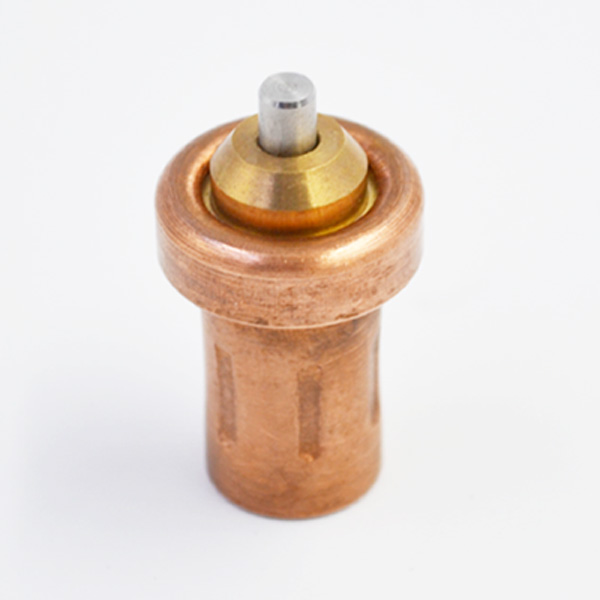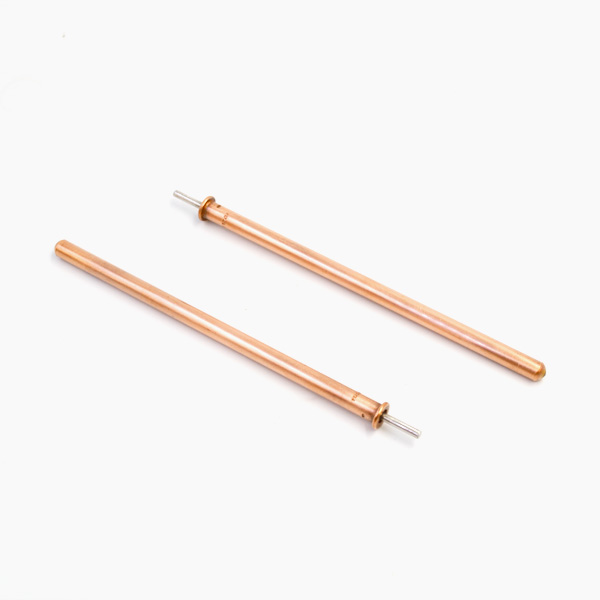The traditional design method of route coordination controller has some problems, such as less data transmission times and inaccurate transmission, which can not balance the distribution of nodes and greatly reduce the efficiency of network control. Therefore, the design of communication network routing coordination controller based on cloud computing environment is proposed. The block diagram of the coordinating controller module is constructed, and the structure of the optical fiber Ethernet coordinating controller is designed by using low-voltage differential technology. The functions of receiving and sending messages and format conversion of the controller in cloud computing environment are designed to realize the automatic adjustable communication routing controller. The experimental results show that the design of the controller can increase the number of data transmission and improve the accuracy of data transmission. At the same time, the control effect is strong, and the robustness of network nodes is good. With the rapid development of communication network technology, information transmission between data and multimedia can be achieved through optical fiber Ethernet communication. The network based on cloud computing can set up a large number of coordination controllers at will in the range of 25 000 GHz, and can be used repeatedly.

With this controller, millions of channels can be accommodated simultaneously, which greatly improves the communication quality. In the cloud computing environment, the communication network uses optical fiber Ethernet to design the coordination controller, which has become the main way of network communication. The traditional communication is designed and constructed by optical fiber communication, which has poor transmission performance and inaccurate data transmission, and can not solve the problem of high broadband network transmission. Therefore, optical fiber Ethernet emerges as the times require.
Route coordination controller in cloud computing environment can reduce network overhead, greatly improve network connectivity and prolong service life. With the rapid development of various communication services, the design method of coordinated control has attracted much attention. The network built with optical fiber resources can expand the link length in full duplex mode, which makes it possible for the application of this technology to extend from local area network to any transmission network. Usually, the routing coordination controller based on cloud computing environment can carry out long-distance transmission.

The maximum transmission distance will only be limited by the physical level, and will not affect the transmission of the entire routing network. With this design method, all technologies can be compatible, and the seamless connection of the network can be realized according to the stipulated MAN and WAN protocols. At the same time, the controller is easy to manage, low cost, and the efficiency of network transmission can also meet the needs of users. The block diagram of communication network routing coordination controller module in cloud computing environment is shown in Figure 1.

From Figure 1, thermostatic element it can be seen that the design of this module is to transplant the routing coordination controller to the embedded system in the cloud computing environment, complete the design of the integrated communication network system under the agreement between the two parties, and control the working mode of the coordination controller in the integrated communication network through the operation of keys; the design of the indicator module includes the working state of the system; Connectivity state and traffic statistics of side direction network [1]. Fiber optic Ethernet controller is composed of an integrated media access physical interface and a media controller. When controlling the network, it must follow the rules of IEEE 802.3 and support the 100BASE? TX standard. Media Intervention Control Layer (MAC) and Physical Layer (PHY) correspond to Layer 3 and Layer 2 of the ISO protocol model respectively [2]. The basic interface of the coordination controller is a simple bus interface of the Media Intervention Control Layer (MAC). This layer can provide a way to send and receive network information, and provide data transmission interface to the Physical Layer (PHY) through the independent interface of the internal media. The Physical Layer (PHY) is mainly responsible for data transmission with the Optical Fiber Ethernet. Its basic structure is shown in Figure 2. Show [3]. Figure 2 shows that when designing the coordination controller, no matter the physical interface is serial or parallel, it can complete the work correctly. The physical interface uses the low-voltage signal of IEEE 1596.3, and uses the link of 8/16 bits as the protocol endpoint specification. The specification specifies in detail that when using the link data of 8/16 bits to transmit clock and frame signals, it cannot. It deviates from the transmission path and cannot be transmitted repeatedly [4]. When using low-voltage differential technology to transmit signals, short-range low-swing constant-current differential signals can be used and implemented in complementary metal oxide semiconductors. Its working frequency is about 300 MHz, and the data is collected along the up and down clock. Compared with the existing technology, the interface network has a higher traffic. At the same time, because all signals are concentrated on a differential line, a large number of pins can be used to complete signal transmission. The main function of information receiving and processing is to convert received information into optical fiber Ethernet packet. The specific process is shown in Figure 3.

Receiving control module is mainly responsible for receiving network data packets from the interface and unpacking them, and sending the split network data packets to the request data module for processing [5]. The information receiving and processing module mainly reads the data from the request data module, extracts the relevant information from the request data, and classifies the information. If the received information is the response information returned by the physical interface module, then the information needs to be re-sent to the request response module in case the sending interface control module extracts and sends the information; if the received information needs to be rewritten or re-read, it needs to be converted to code with query address and stored in the request response module. Register; if received information mailbox information, then the information in the form of data is sent to the request module for further processing. Message module is a function module to realize information transmission, reception and processing. It is mainly responsible for integrating received information in the form of mailbox, which facilitates the formation of optical fiber Ethernet packet [6]. This module needs to control the sub-module and 18 mailbox modules.
When the information is sent to the mailbox, the sub-module is first marked according to the mailbox number and divided into mailbox information and mailbox message data. Then it is stored in each mailbox module, and the mailbox information data storage address is obtained by calculation. Finally, the mailbox data is stored in each mailbox module. Message data. Mailbox module mainly completes mailbox matching and produces timeout signal processing, while message module is mainly responsible for clearing and sorting out the timeout information.

If the information processing in mailbox is timeout, then there will be empty mailbox signal, which can ensure that mailbox is not blocked. In addition, the module is also responsible for receiving messages generated by message length and segment number, and returning them to the information receiving and processing module [7]. After information processing, the received mailbox data is transmitted to the data module through transmission, and the data packet of the optical fiber Ethernet is reconstituted. The message receiving and sending process is completed through the optical fiber Ethernet sending module. The module is mainly responsible for receiving the message header and data which are composed of messages. In this module, the received information is judged according to the information packet existing in the data. Its receiving control function is also responsible for receiving rewriting, rereading and general information, and storing the received information into the database [8]. The state machine of the information receiving and processing module is shown in Figure 4. If the information is in the “re-read” state, then the information needs to be stored in the “read” team, which can store the read data into the request response data module. If the address of the memory is not clear, then the “read” state needs to clear all the “re-read” information [9]. In order to verify the performance of communication network routing coordination controller design in cloud computing environment, the following experiments are carried out. The experiment was carried out on the platform of Matlab, using a desktop computer and installing a two-port 10,000-megabit fiber optic Ethernet controller to support the interconnection of peripheral components with standard bus.
This part is a virtualized hardware optimization feature, supporting a unified network structure, allowing LAN, storage network and any other network sharing. In addition, it uses the adapter of integrated physical layer (PHY) and blade server sandwich card. The range of communication network nodes in cloud computing environment is 2 400 m x 2 400 m, and the parameters are randomly distributed as shown in Table 2. From the above experimental environment and parameter settings, it can be seen that the design of communication network routing coordination controller can be quantitatively analyzed. The transmission performance analysis experiment of coordination control network is carried out by using this design method and traditional method. The number of transmission times and the correct transmission probability are taken as test indexes. The experimental results are shown in Fig. 5. Fig. 5 shows that when the number of nodes is 100, the number of data transmission using traditional design method is about 7 800 times, and with the increase of the number of network nodes, the rising speed gradually slows down; while in the cloud computing environment, the number of data transmission by coordinator design is about 12 000 times, and with the increase of the number of network nodes.
The number of transmission increases gradually. The traditional method is compared with the method in this paper. The result is shown in Fig. 6. Figure 6 shows that when the number of nodes is small, the correct probability of information transmission by traditional design method is about 0.87, and it shows a downward trend with the increase of the number of nodes; while in the cloud computing environment, the correct probability of data transmission by coordinating controller design is about 0.98, which will not be affected by the number of nodes.
The advantages of this design method are shown, and the accuracy of information transmission is higher than that of traditional design method. The characteristic of the communication route coordination controller is to use the built-in network control module directly, transplant and simplify the link specification successfully, and write the communication route coordination control program in the cloud computing environment, so that it can be transformed into a hierarchical structure with standard protocol. The controller design can automatically realize the network communication function, and then complete the network. Integral control of network. Aiming at the problems of poor transmission performance and inaccurate data transmission in traditional design methods, the design method in cloud computing environment can effectively improve the robustness of network transmission, with superior performance and good application value.
